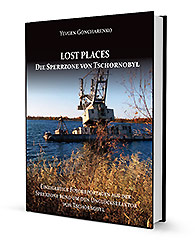 A year ago, in Japan there was a terrible natural disaster that led to man-made accident at the nuclear power plant Fukushima Daiichi. Thousands of dead and missing, hundreds of thousands of affected residents in Japan, many of whom are still unable to return to normal life, washed away cities and villages, the huge economic damage – this is sad statistics of this disaster.
A year ago, in Japan there was a terrible natural disaster that led to man-made accident at the nuclear power plant Fukushima Daiichi. Thousands of dead and missing, hundreds of thousands of affected residents in Japan, many of whom are still unable to return to normal life, washed away cities and villages, the huge economic damage – this is sad statistics of this disaster.
Japan is a fascinating country, with an incredibly rich culture and history, with wonderful traditions, fabulous beautiful nature and architecture, with wonderful people. We visited Japan in the winter 2011–2012. In fact, our impressions from Japan are beyond description. But we were more amazed not by the nature or the shrines, not by technology and economic development. We were struck by the people of Japan. We continue to admire the incredible courage, perseverance and tenacity of Japanese. In spite of the terrible consequences of the disaster, people in Japan do not give up, they find the strength to not only live, but to move forward, despite the pain of loss. During the weeks spent in Japan, we met with representatives of local authorities, police, decontamination officers, volunteers, ordinary residents of the affected areas. Each of them carried the heavy burden of bereavement, many have lost family and friends after the tsunami, many were left homeless and forced to live with relatives or in temporary settlements. Many of those we spoke to, were disappointed in the government, had reasonable claims to the TEPCO, complained to their present situation. This is a normal, expected response. But besides all this, the people we met had a striking spirit to fight with misfortune befell them. Ordinary residents of Fukushima, not being professionals, became volunteers, decontamination officers, scout-dosimetrists, activists. Despite the calamity fallen on them, they continued to believe in their country and make every endeavour to Tōhoku region revived.
In 2011, the channel NHK made a film with a wonderful title “Can You See Our Lights?”. The film is dedicated to the Japanese centuries-old summer festivals. Many of the venues of the festivals have been devastated by the earthquake and tsunami; many were in the area of mandatory or voluntary evacuation. However, people from Rikuzentakata, Soma, Minamisoma and other places of Tōhoku, no matter what, decided to carry out their summer festivals. What would make people who just recently buried their relatives that died during the tsunami; people who have lost their homes; people, that land, which they inherited from their ancestors, now contaminated with radiation; people separated with their evacuee families; people who lost their jobs and livelihoods? What made them in such an incredibly difficult circumstances, arrange holiday festivals, even knowing that this year, few people dare to come look at them? I think the answer is obvious – the incredible fortitude of the Japanese, belief in own country and in own strength, faith in own roots and traditions. When there is sorrow, it is normal to give way to despair, strewing ashes on one’s head and moaning. But what is admirable, when in a similar situation people find the strength to stand up, to muster up theirs strength, and continue to move on. In 2011, thousands of beautiful lights of festivals in Tōhoku, delicate petals of a blossoming Miharu Takizakura, thud of charger' hoofs of Soma samurai told to the world – Tōhoku will rise again!
We humble before the fortitude and courage of the Japanese. Deeply grieved with the people of Japan, survivors of this terrible triple disaster, we want to say – we believe in you, we believe in your strength, we see your lights! And we know – Tōhoku will rise again! No natural or man-made disasters cannot break the country in which such people live!
がんばれ福島県, がんばれ東北地方, がんばれ日本!
Ganbare Fukushima, Ganbare Tōhoku, Ganbare Japan!
Short information:
March 11, 2011 at 14:46 local time in Japan was the strongest in the known history of Japan earthquake. During the next 10-30 minutes the tsunami waves, reaching 40 meters in height, reached the coast of Japan. From the earthquake and tsunami worst-hit prefectures are Miyagi, Iwate and Fukushima. According to the report of the National Police Agency of Japan on 12 March 2012 the official number of victims of the earthquake and tsunami in 20 prefectures in Japan: 15,854 people died, 3,155 people remain missing, 26,992 people were injured. The tsunami broke the reactors' connection to the power grid and also resulted in flooding of the rooms containing the emergency generators of Fukushima Daiichi nuclear power plant. Which was the reason for inoperability of all systems of usual and emergency cooling and led to the reactors 1, 2 and 3 full meltdown in the early days of the accident. Starting from March 11, 2011 the Japanese government has conducted the evacuation of residents of areas adjacent to the plant. By March 24 the evacuation area was expanded to 30 kilometres. Several hundred thousand of people were forced to leave their homes and seek refuge with relatives or in temporary settlements outside the zone of radioactive contamination.
Natalya «Tamerlan» Khan
| The book «Lost Places – Die Sperrzone von Tschornobyl»< Prev | Next >Есть такие люди, которых принимает зона отчуждения |
|---|








